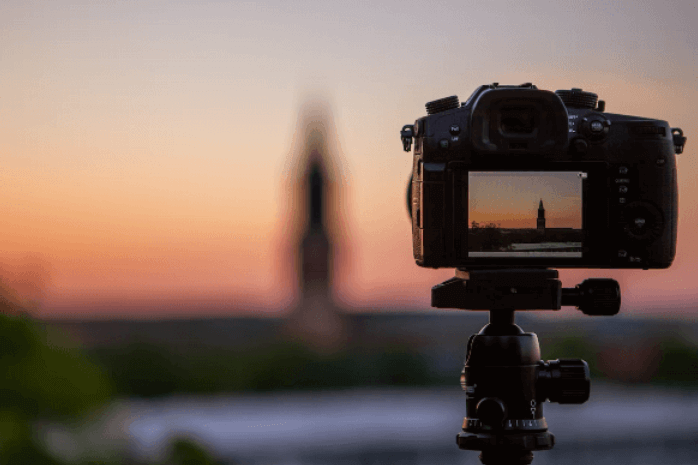RAW Versus JPEG: Which Photo Format Should You Use?

When one thinks about photography technique, usually the most common things that come to mind are composition, style, and visual aesthetics. Most new photographers fail to realize that image format is equally as important when developing their own photography technique!
Digital file formats are often overlooked, but in professional environments, they can make or break your project. If you go through your camera settings you might be able to see the option to save photos in RAW, JPEG, CIFF, HEIF, etc. The list is endless! It seems impossible to settle on one image format for your photography technique, but in this guide, we’ve narrowed it down to just RAW vs JPEG photos.
RAW and JPEG are the most used file formats in the photography world and for good reason. Each image format has its pros and cons, which will be discussed in this guide to help you choose between RAW vs JPEG photos.
What is a RAW image format?
RAW image files are basically digital negatives – a raw photo that hasn’t been processed, compressed or edited. It’s often referred to as a lossless image format because the file contains pure data from your camera. This means that you don’t lose any of the information you just captured and it’s all preserved in the stored file for manual processing.
The pros of shooting in RAW
Shooting in RAW is often favored as a photography technique because it gives the best possible picture quality that you can get from the camera. Since there’s no compression or automatic processing happening, you can get the following details in your photos that can’t be achieved with other formats:
More colors
Since you can store more data in RAW files, more colors are available in your photos. A 12-bit file can have up to 68 billion colors in one image, while the colors in 16-bit RAW images can extend up to 4 trillion!
Improved brightness
Usually, it’s hard to fix an overexposed or underexposed image once it’s been saved in your camera as a processed file. However, RAW files can store up to 16 thousand levels of brightness which gives you more freedom to edit and adjust. The tones, highlights, and shadows of your image appear much smoother and can be edited in post without sacrificing quality or detail.
Dynamic range
Lighting is a very important photography technique. Dynamic range corresponds to the amount of light and dark parts of your photo. If you can’t control the lighting in the area during your shoot, capturing RAW images can give you a broader dynamic range to work with when you edit them later on.
As a professional, you always want to deliver the highest standard of your work. So if you’re one for fine-tuning your photos to perfection before sending them over to your clients, shooting in RAW is definitely the way to go.
The cons of shooting in RAW
Shooting in RAW does have its limitations, however. It depends on your photography technique, but some of the following issues that come with RAW files might be a deal breaker for you.
Storage size
Since RAW photos are uncompressed and don’t remove any of the data your camera captures, they also take up a lot of space. This is definitely not ideal for any situation where you have to hold on to a large number of photos, such as events or big shoot days. Having to constantly swap out memory cards, back up your files, or buy extra storage can be annoying and interrupt your workflow.
Post-processing
A major issue some photographers have with shooting in RAW is that editing each photo is always required. Straight out of the camera, they won’t look that great – the absence of built-in processing means that you have to edit the images yourself to make them look the way you want. If you don’t have the time or manpower to do this and you need to use the photos immediately, it’s best to consider other image formats instead.
Compatibility
RAW files cannot be imported and viewed into just any device on their own. They need to go through processing software first that can handle them. Some programs like Adobe Photoshop or Lightroom can be used to convert them into other formats, but it’s an extra step that not everyone has time for.
These images also can’t be opened using other camera software. For example, Canon software can’t open RAW images taken using a Sony camera – so if your team uses different brands and equipment, it may be hard to collaborate on certain projects.
What is a JPEG image format?
JPEG stands for Joint Photographic Experts Group and was created as a standard file format for photographers to easily share and export photos. To this day it’s still widely used for image files and is typically the default shooting mode for most modern cameras. Despite its smaller size, JPEG can still give you high-quality detailed photos that are unmatched thus far by other similar formats.
The pros of shooting in JPEG
The main argument for choosing this format in the battle of RAW vs JPEG photos is the difference in file size. JPEG photos are lossy and compressed, so they take up much less space in your storage system, but this also means that they lose a lot of data in the process.
However, this is the main reason why most creatives would choose this format when faced with RAW vs JPEG photos: convenience, flexibility, and shareability. The smaller file size means that you can instantly send and upload photos straight from your camera, and you can also take more of them at once because you don’t have to worry about taking up storage space.
The cons of shooting in JPEG
The primary selling point of JPEG photos is also its downfall because the smaller file size also means a great reduction in detail. These are also typically processed by camera software for auto-adjustments which can no longer be reversed. If you have a photo with bad exposure, it’s hard to edit it back to the way you want because the compression would give you a lower-quality image. You would also have less color detail and poor dynamic range.
The final verdict: RAW vs JPEG photos
Each photographer will have their own individual preferences, and every image format is valid when it comes to personal technique. Both RAW and JPEG have their capabilities and limitations, but when it comes to producing professional work, RAW is definitely the way to go for maximum quality and client satisfaction.
You can always convert your photos into JPEG to save on storage space after post-processing, as this is the best format with regard to size-and-quality ratio. At the end of the day, it’s up to you to make this final decision on RAW vs JPEG photos, all depending on the way you work.
For more tips on photography and creating authentic content, feel free to reach us at The Outside Collective!




